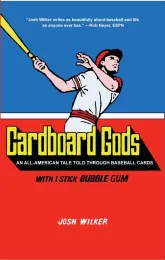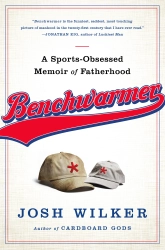Lately I’ve been reading a lot of short stories by Raymond Carver. I always circle back around to his stuff, usually when I’m feeling like I can barely get out of bed, and he helps me get out of bed. This latest Carver jag grew out of my reading of a new biography of Carver by Carol Sklenicka. I learned a lot of new stuff about Carver in the bio, including that as a boy he was fat. Maybe that information helped me notice, after all these times reading his stories, that many of them include descriptions of eating, and that these descriptions, in the often harrowing context of a given Carver story, turn the act of eating into something sacramental. Carver’s fictional world is rife with uncertainty, disconnection, loneliness, loss. The concrete act of eating, in relief against these immeasurable hungers, takes on a power that borders on holiness. It’s something to hold onto, an affirmation. One of his most famous stories, “A Small, Good Thing,” ends with a baker offering food to parents whose son has died. Another of his well-known stories, and one that helped launch his career, is simply called “Fat” and centers on a waitress trying and failing and continuing to try to get at what it felt like to serve a man who was enormously obese.
***
“A big fat guy who hit home runs for a few years.” – Bill James’ entry, in its entirety, on Cecil Fielder in James’ Historical Baseball Abstract
“He is fat . . . but that is not the whole story.” – Raymond Carver, “Fat”
***
In “Fat,” there is a muted element of wonder in the waitress’ description of the prodigious amount of food she kept bringing to her customer. Reading it, I was reminded of a book I’d read as a child.
I don’t know if it’s still around, but RIF, which stood for “reading is fundamental,” was a program that visited schools and allowed each kid to choose a book to bring home. I always went for a sports book, something like Basketball’s Big Men or Baseball’s Best Catchers. One of my choices was a dual biography of Nolan Ryan and Reggie Jackson (it had no back cover but two front covers, one featuring Ryan in an Angels uniform and one showing Reggie in his Oakland garb), and in the Reggie bio there was a description of what he ate for breakfast every day. It was like several meals all rolled into one. Eggs and pancakes and sausage and bacon; orange juice and milk and coffee; potatoes and grits and oatmeal and big hunks of bread slathered with butter; and steak, always a big thick slab of steak. I think there might have even been a milkshake. But it was the huge steak that always floored me. For breakfast! I imagined Reggie hunkering down every morning and shoveling it in, and in this vision I was both an amazed watcher of the strapping slugger and the slugger himself, feeding every last alley of hunger inside. Reggie seemed superhuman in many ways, not least because of his ability to devour so much food and turn it into power.
***
Eating was a big deal for me back then. I loved Saturdays for the day-long ritual of eating it offered. I started out with several bowls of cereal, each spiked with heaping spoonfulls of sugar and backed with glasses of milk and buttered toast, all of this downed in front of cartoons: Bugs, Scooby-Doo, Goober and the Ghost Chasers, Fat Albert, Thundarr the Barbarian. At noon I’d switch to lunch and eat Spaghettios, which I’d chase with a tower of Chips Ahoy and more milk as the television programming edged into sports. All these years later, I’m still coming to terms with that first ritualized response of mine to empty time. Now whenever Saturday rolls around I feel that same pull—television to numb and food to provide the illusion of fullness. It’s chiefly a quirk of genetics (along with the limiting of Saturdays to once a week and my eccentric, outdated love of pedestrianism) that I’m not the size of a sofa.
***
If you had to choose a last meal, what would it be? I think this question came up back on Baseball Toaster, though I can’t recall where. I know Scott Long sometimes delved into food on his blog, The Juice, so maybe it was there, but I’m not sure. But I think I joined into the conversation and said I’d choose a Fenway Frank, the implication being that I’d be in Fenway watching the Red Sox as I ate it. I understand now that the hot dogs there are nothing particularly special, but when I was a kid I honestly thought they were the greatest-tasting food I’d ever eaten. I was being fed on every level. I was surrounded by my family, sitting next to my brother, wolfing down a hot dog, talking about baseball statistics, and watching the real-live versions of the Cardboard Gods, right there below me. It was worship.
***
Back then I dreamed of being a season-ticket holder at Fenway, but instead my connection to that place has always remained one that retains a kind of mystical distance. I return when I can. One of my most memorable adult returns came in the early 1990s, when my brother and I traveled up from New York to Boston to stay with our aunt and uncle and catch a couple games in a series against Detroit. Early in one of the games, Roger Clemens gave up back-to-back homers and then drilled the next batter, John Shelby, who charged the mound. Before Shelby could get to the ace, the late, great John Marzano, a backup catcher getting a rare start, made a flying tackle of the charging Tiger. Both benches emptied. My brother and I had never seen a brawl in person before, and this was a pretty good one, even though it didn’t take that long for it to calm down to the usual shoving and holding waltz where everyone on one team partners up with someone of roughly similar size and weight on the other team. This partnering was actually the best part of the brawl, because it offered everyone in attendance a joyous testimonial to the singular sensation that was Cecil Fielder. Since there was no one of equal size on the Red Sox’ roster (or on anyone’s roster), Mo Vaughn and Carlos Quintana, themselves both hefty specimens, combined to form the equivalent of Cecil Fielder, each holding one of his leg-sized arms and looking hilariously tiny as they did so, as if Cecil could send them sprawling with a chuckle and a shrug if he felt like it.
I loved Cecil Fielder that day, and every day of his career thereafter, save for when I had to avert my eyes when he donned pinstripes for a couple years near the end. He was a big fat guy who hit home runs. What’s not to love? And now that the uncertainty of the world has revealed itself to be every bit a part of that one thing I had always held in stark opposition to uncertainty—baseball statistics—I love Cecil Fielder even more. Who knows what the numbers in the single-season home run record list mean anymore? Since Cecil Fielder became, in 1990, the first player since George Foster in 1977 to hit over 50 home runs in a season, the once-rare feat has been achieved at just over a once-a-season rate. When Fielder did it, it seemed to me a thing of wonder, as if it hadn’t been done in a lifetime. I had been a kid when Foster had done it, and by 1990 I was, at least biologically, an adult. Since things are different when you’re an adult, Fielder topping 50 taters didn’t shine as brightly on my life as Foster’s feat, but it was amazing nonetheless. The devaluation of the mark since then has shrunken the significance it might otherwise have, but to me it remains something special. From the big, fat man: a small, good thing.







You must be logged in to post a comment.